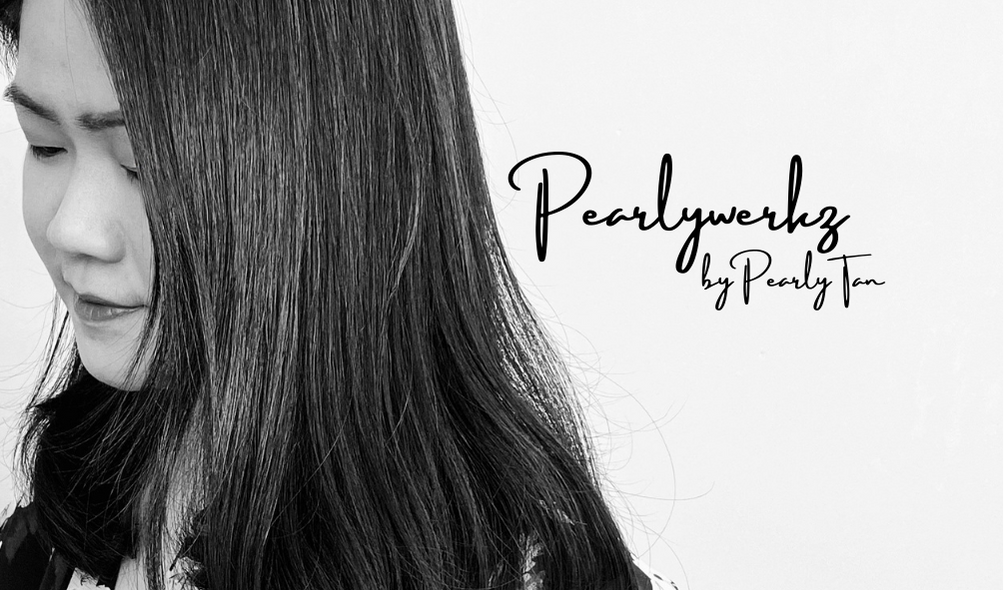5 Things you need to know about Winter Solstice
12/21/2016
The Winter Solstice is here again! Many Chinese, learn that we gather to eat the glutinous rice balls for this festival but few knows the reason why. For my husband, any festival which he gets to eat something, makes him happy so he wouldn't probe further.
If you wikipedia "Winter Solstice" you will get an article that tells you this is the shortest day and longest night which you will experience in the year, along with some significance that it is time for the animals to mate, time to harvest the crops and the awakening of the nature.
If all that sounds weird and uninteresting to you, then let me share with you the significance of it in a Chinese's context based on what I had learn growing up from a traditional family, as well as what I had gathered from Baidu. So the next time someone ask you, you can answer them easily. So, here I present to you,
5 things you need to know about Winter Solstice:
- During Winter Solstice "冬至". The Chinese gathers to make glutinous rice balls known as "汤圆" to worship our ancestors and gods before they sit together to enjoy the dessert as a family.This is made by mixing glutinous rice flour with water, molding them into balls and boiling them in a sweet (black sugar + Pandan leaf + Ginger) or savory (Peanut) soup. The traditional types comes with pink and white balls.
- The roundness in the glutinous rice balls represents reunion, fullness for a family “团圆”“圆满”. This is often why they come in a round shape rather than fanciful shapes. We are often told to make this balls with both hands, to signify our sincerity to the gods.However, with the modernized times, the glutinous rice balls now comes in various cute animal shapes, a rainbow of colours and even in different sizes. This is one way to entice the new generations to continue the traditional as well as for kids to enjoy this treat. Many also choose to purchase ready made glutinous rice balls instead of making it by themselves due to their busy schedules.
- As the Chinese believes in auspiciousness and that good things come in pairs, we often make an even number of glutinous rice balls.
- Winter Solstice often signify the start of the next Chinese Lunar year, therefore the family must eat the glutinous balls together as a sign of reunion and that the family will be together for the next year to come.
- Since it signifies the beginning of a new Chinese Lunar year, finishing the dessert means that we have all grown a year older after the dessert.
You may wish to refer to the original article in traditional Chinese for more information on this festival, I have broken them down into different parts for easy reading.
吃汤圆在明、清时期已经约定俗成。在冬至这天,要“作粉圆”或“粉糯米为丸”。这些在史料上也有正式的记载,称“冬至,粉糯米为丸,名‘汤圆’”。做好汤圆后要祀神祭祖,而后合家围吃汤圆,叫做“添岁”。所以,冬至吃汤圆,古而有之。
吃汤圆是冬至的传统习俗,在江南尤为盛行。“汤圆”是冬至必备的食品,是一种用糯米粉制成的圆形甜品,“圆”意味着“团圆”“圆满”,冬至吃汤圆又叫“冬至团”。民间有“吃了汤圆大一岁”之说。冬至团可以用来祭祖,也可用于互赠亲朋。旧时上海人最讲究吃汤团。古人有诗云:“家家捣米做汤圆,知是明朝冬至天。”。“圆”意味着“团圆”“圆满”。冬至吃汤圆,象征家庭和谐、吉祥.
还有一种解释是:冬至是一年中最长的一夜,冬至那天,天还未亮,妇女们就起来生火煮汤圆,先敬天祭祖,再全家围坐吃汤圆。所以冬至吃汤圆,除了表示太阳(阳光)逐渐回来,也代表团圆的意思,现代人更喜欢把它当成圆满的象征。
我国各地的风俗民情虽各有差别,但大致是相同的。作冬至圆时,经常应孩子们的要求捏一些小动物,小猫、小狗、小兔子、小老虎等等。孩子们每到此时都很高兴。吃冬至圆以前,在门窗桌柜床灯的后面,都要分别粘一个冬至圆,称为“耗晌”,要等到“送灶”以后才能烤食。如果这时家里有孕妇的话,冬至圆发了,就会生男,否则就会生女。
吃冬至圆时入口必须成双成对,以求吉利。吃到最后只剩两粒,已婚的人将会万事如意,剩下一颗,单身未婚者将会凡事顺利。
史料显示,上古的夏殷周时代,对“正月”的具体时间安排是不一样的。夏以今农历一月为正月,第一个节气是立春;殷以今农历十二月为正月,一年中的第一个节气为小寒;周则同样以今农历十二月为正月,但一年中的第一个节日却是从冬至开始,因此冬至这一天,也就是当年的“元旦”。 周以后,计算二十四节气,都从冬至开始,这样冬至便成了“岁首”。再者冬至所在的十一月份曾经是“正月”。这也就是“冬至大如年”一说的来头。有学者认为,正是由于历史上确有一段时间把“冬至”视为“岁首”,把冬至的前一天之夜视为“岁除”。当冬至节随着历史的发展而呈式微之态时,原来那些习俗,便渐渐融入了后来盛行的“春节”之中了。
冬至具备“阳气始至”的特殊特点,意味着“阳气始生”,万物开始萌动。因此,在冬至日吃汤圆,又何尝不是意味着新一年的开始呢?因此长了一岁,似乎也在情理之中了。
Credits: https://zhidao.baidu.com/question/126631136.html
I hope that you had a good read of this simple piece that I had put together for you. Now that you have learn more about the festival, do share this article with your friends and family. Enjoy your bowl of glutinous rice balls knowing its significance and pass on the Chinese tradition.
Do share with me in the comment box, your thoughts on this festival as well! Do you celebrate it?
P/s: This article is non-sponsored, however, you can send me some glutinous rice ball if you wish. Do follow pearlywerkz on facebook and instagram for more good reads. This article was originally written on pearlywerkz.wordpress.com by the same author.
吃汤圆在明、清时期已经约定俗成。在冬至这天,要“作粉圆”或“粉糯米为丸”。这些在史料上也有正式的记载,称“冬至,粉糯米为丸,名‘汤圆’”。做好汤圆后要祀神祭祖,而后合家围吃汤圆,叫做“添岁”。所以,冬至吃汤圆,古而有之。
吃汤圆是冬至的传统习俗,在江南尤为盛行。“汤圆”是冬至必备的食品,是一种用糯米粉制成的圆形甜品,“圆”意味着“团圆”“圆满”,冬至吃汤圆又叫“冬至团”。民间有“吃了汤圆大一岁”之说。冬至团可以用来祭祖,也可用于互赠亲朋。旧时上海人最讲究吃汤团。古人有诗云:“家家捣米做汤圆,知是明朝冬至天。”。“圆”意味着“团圆”“圆满”。冬至吃汤圆,象征家庭和谐、吉祥.
还有一种解释是:冬至是一年中最长的一夜,冬至那天,天还未亮,妇女们就起来生火煮汤圆,先敬天祭祖,再全家围坐吃汤圆。所以冬至吃汤圆,除了表示太阳(阳光)逐渐回来,也代表团圆的意思,现代人更喜欢把它当成圆满的象征。
我国各地的风俗民情虽各有差别,但大致是相同的。作冬至圆时,经常应孩子们的要求捏一些小动物,小猫、小狗、小兔子、小老虎等等。孩子们每到此时都很高兴。吃冬至圆以前,在门窗桌柜床灯的后面,都要分别粘一个冬至圆,称为“耗晌”,要等到“送灶”以后才能烤食。如果这时家里有孕妇的话,冬至圆发了,就会生男,否则就会生女。
吃冬至圆时入口必须成双成对,以求吉利。吃到最后只剩两粒,已婚的人将会万事如意,剩下一颗,单身未婚者将会凡事顺利。
史料显示,上古的夏殷周时代,对“正月”的具体时间安排是不一样的。夏以今农历一月为正月,第一个节气是立春;殷以今农历十二月为正月,一年中的第一个节气为小寒;周则同样以今农历十二月为正月,但一年中的第一个节日却是从冬至开始,因此冬至这一天,也就是当年的“元旦”。 周以后,计算二十四节气,都从冬至开始,这样冬至便成了“岁首”。再者冬至所在的十一月份曾经是“正月”。这也就是“冬至大如年”一说的来头。有学者认为,正是由于历史上确有一段时间把“冬至”视为“岁首”,把冬至的前一天之夜视为“岁除”。当冬至节随着历史的发展而呈式微之态时,原来那些习俗,便渐渐融入了后来盛行的“春节”之中了。
冬至具备“阳气始至”的特殊特点,意味着“阳气始生”,万物开始萌动。因此,在冬至日吃汤圆,又何尝不是意味着新一年的开始呢?因此长了一岁,似乎也在情理之中了。
Credits: https://zhidao.baidu.com/question/126631136.html
I hope that you had a good read of this simple piece that I had put together for you. Now that you have learn more about the festival, do share this article with your friends and family. Enjoy your bowl of glutinous rice balls knowing its significance and pass on the Chinese tradition.
Do share with me in the comment box, your thoughts on this festival as well! Do you celebrate it?
P/s: This article is non-sponsored, however, you can send me some glutinous rice ball if you wish. Do follow pearlywerkz on facebook and instagram for more good reads. This article was originally written on pearlywerkz.wordpress.com by the same author.







0 comments